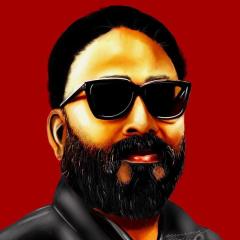இனப்படுகொலை நினைவு தினம்: யூதர்களை கொன்று குவித்த ஹிட்லரின் 'கொடூர வதை முகாம்கள்'
By
ஏராளன்
in உலக நடப்பு
Share
-
Tell a friend
-
Topics
-
Posts
-
ஒரு குழந்தையின் இறப்பில் மகிழ்சி கொள்ளும் ஒருவன் இருந்தும் பிணம் இறந்தும் பிணம்.
-
கவலைப்படாதீர்கள், அடுத்த தேர்தலில், மக்கள் உங்கள் ஆலோசனையின்படி அனுராவை தெரிந்தெடுத்து தங்கள் தேவைகளை நிறைவேற்றிக்கொள்வார்கள்! அப்போ....மக்கள் அவருக்கு வாக்குப்போட வில்லையா? ஏன் அவர்கள் அனுராவிடம் கேட்க வேண்டும்? சாணக்கியன் இந்தப்பிரச்சனையில் தலையிடத்தேவையில்லையா? அல்லது அதை கதைக்க தைரியமில்லையா? அவருக்கு வாக்குப்போட்ட மக்களை அவமதிக்கிறீர்கள் நீங்கள் இப்படிச்சொல்லி!
-
இதில் என்ன சந்தேகம்,.. கயாலாகாதவர்கலால் தமிழரசுக் கட்சி நிறைந்திருக்கும்வரை சும்மும் இருப்பார். 🤣
-
By nunavilan · பதியப்பட்டது
படிகள் | அரவிந்தன் ஓவியம்: Gautam Mukherjee “நல்லவேளை, எலும்பு எதுவும் முறியல. இன்னும் கொஞ்சம் பெசகியிருந்தா கணுக்கால் எலும்பு முறிஞ்சிருக்கும்” என்றார் டாக்டர். நீலகண்டன் அவர் கட்டுப் போடுவதையே பார்த்துக் கொண்டிருந்தான். “குறைஞ்சது மூணு நாளாவது இந்தக் காலுக்கு ரெஸ்ட் குடுங்க. கூடியவரைக்கும் நடக்காதீங்க. நடந்தாலும் இந்தக் கால்ல உடம்பைத் தாங்காதீங்க. உக்காரும்போதும் படுக்கும்போதும் காலை மேல தூக்கி வெச்சிக்கங்க. எவ்வளவுக்கு எவ்வளவு ரெஸ்ட் குடுக்கறீங்களோ அவ்வளவு சீக்கிரம் சரியாகும்.” கட்டு, கால்களை இறுக்கமாகப் பற்றியிருந்தது. நீலகண்டன், டாக்டரிடம் விடைபெற்றுக் கிளம்பினான். உடன் வந்திருந்த சந்திரமோகனின் தோளைப் பற்றியபடி மெதுவாக நடந்து வெளியில் வந்தான். இருவரும் ஆட்டோவில் ஏறிக்கொண்டார்கள். நல்லவேளை என்று டாக்டர் சொன்னது நீலகண்டனின் மனதில் எதிரொலித்துக் கொண்டிருந்தது. நல்லவேளைதான். இடுப்பில் அடிபடவில்லை. காலையில் அந்தப் பல்லங்காடிக்குச் சென்றபோது மனம் மிகவும் சுறுசுறுப்பாகவும் உற்சாகமாகவும் இருந்தது. வழக்கத்தைக் காட்டிலும் வண்டியை வேகமாக ஓட்டினான். வண்டியை நிறுத்திவிட்டு நடந்து வருகையில் வழக்கத்தைக் காட்டிலும் நடை வேகம் கூடியிருந்தது. சொல்லப்போனால் சிறு துள்ளல் இருந்தது. பக்கத்தில் வந்த சந்திரமோகன் வியப்பாகப் பார்த்தாலும் எதுவும் சொல்லாமல் அமைதியாக இருந்தான். அங்காடியின் நுழைவாயிலுக்கு முன்பு மூன்று படிகள் இருந்தன. நீலகண்டன் தரையிலிருந்து தன்னையறியாமல் துள்ளி மூன்றாம் படிக்குத் தாவினான். மூன்றாம் படியில் காலை வைக்கும்போது கால் பிரண்டு தடுமாறி விழுந்தான். சந்திரமோகன் பதறிப்போய்த் தாங்கிப் பிடித்தான். நீலகண்டன் சுதாரித்தபடி எழுந்து நின்றான். லேசாக வலித்தது. அங்காடியின் நுழைவாயிலில் இருந்த காவலர் தன்னுடைய நாற்காலியில் உட்காரச் சொன்னார். சந்திரமோகன் உள்ளே சென்று தண்ணீர் வாங்கிவந்து குடிக்கச் சொன்னாள். நேரமாக ஆகக் கால் வலி கூடியபடி இருந்தது. ஏதேனும் பெரிதாக அடிபட்டிருக்குமோ என்று பயந்த நீலகண்டன் கால் எந்த நிலையில் இருக்கிறது என்று பார்க்க எழுந்து நின்றான். மறுகணம் உடல் முழுவதும் உதறலெடுக்க, சடாரென்று உட்கார்ந்துகொண்டான். காலைக் கீழே வைக்கையில் பொறுக்க முடியாத வலி உடல் முழுவதையும் உலுக்கியது. சந்திரமோகன் பயந்துபோனான். “என்ன ஆச்சு நீலா…” என்று அவன் தோள்களைப் பற்றினான். நீலகண்டன் சற்று ஆசுவாசமடைந்ததும் சந்திரமோகன் கீழே மண்டியிட்டு அமர்ந்து நீலகண்டனின் காலைப் பார்த்தான். “செருப்ப கழட்டு” என்றான். நீலகண்டன் கழற்றினான். சந்திரமோகன் அவன் காலைத் தொட்டதும் நீலகண்டன் விறுக்கென்று காலை இழுத்துக்கொண்டான். சந்திமோகன் கவலையுடன் நீலகண்டனின் முகத்தைப் பார்த்தான். “ஃப்ராக்சரா இருக்குமோன்று தோணுது நீலா…” என்றான் தணிந்த குரலில். நீலகண்டனின் முகத்தில் வலியின் வேதனை படர்ந்திருந்தது. இடுப்பில் ஏதாவது ஆகியிருக்கிறதா என்று லேசாக இடுப்பை அசைத்துப் பார்த்தான். நல்லவேளை. ஒன்றுமில்லை. “எதுக்கு சார் ஜம்ப் பண்ணி வந்தீங்க?” என்று காவலர் கவலையோடு கேட்டார். நீலகண்டன் தலையைக் குனிந்துகொண்டான். சந்திரமோகன் கேட்க விரும்பிய கேள்விதான் அது என்றாலும் இந்த நேரத்தில் அதைக் கேட்கக் கூடாது என்று கட்டுப்படுத்திக் கொண்டிருந்தான். ஆட்டோ பிடித்து இருவரும் மருத்துவமனை சென்றார்கள். எக்ஸ்ரே எடுத்துப் பார்த்த டாக்டர் எலும்பு முறிவு இல்லை என்று சொன்னார். உள்ளே பலமாக அடிபட்டிருக்கிறது என்றார். அவனை வீட்டிற்குக் கூட்டிக்கொண்டு போன சந்திரமோகன், நீலகண்டன் மனைவியிடம் விவரத்தைச் சொல்லிவிட்டு, ஓய்வெடுக்கும்படி சொல்லிவிட்டுக் கிளம்பினான். வண்டியை மாலையில் கொண்டுவருவதாகச் சொன்னான். “உங்களுக்கு எதுக்கு இந்த வேலை? படியில ஒழுங்கா ஏற மாட்டீங்களா? அவ்வளவு என்ன அவசரம்?” என்று கேட்டாள் மஞ்சு. நீலகண்டன் பதில் சொல்லவில்லை. சிறிது நேரம் கழித்து மஞ்சுவே தொடர்ந்தாள். “ரொம்ப பாத்து பாத்துதானே படில ஏறுவீங்க? இன்னிக்கு என்ன ஆச்சு?” என்றாள். நீலகண்டன் பதில் சொல்லவில்லை. அவனுடைய அமைதியைக் கண்டு மஞ்சுவும் அமைதியானாள். அவள் முகத்தில் தெரிந்த வேதனை நீலகண்டனை வருத்தியது. “டீ போட்டு தரயா?” என்றான் நீலகண்டன். மஞ்சு எழுந்து உள்ளே போனாள். நீலகண்டன் தன் கால் கட்டை வெறித்துப் பார்த்துக் கொண்டிருந்தான். அங்காடியின் படிகளில் துள்ளி ஏறிய கணம் திரும்பத் திரும்ப அவன் மனதில் தோன்றியபடி இருந்தது. தெருவின் முனையில் இருந்த பிள்ளையார் கோவிலை ஒட்டித் திரும்பியதும் அவன் கண்கள் ரயில் நிலையத்தின் மதில் சுவருக்கு அப்பால் நீளும் தண்டவாளத்தைப் பார்த்தன. ரயில் வருவது தெரிந்தது. ஓட்டமெடுக்கத் தொடங்கினான். இங்கிருந்து சுமார் 200 மீட்டர் தொலைவில் ரயில் நிலைய வாசல். பிறகு 22 படிகள். பிறகு 50 அடி நடைபாதை. அதன் பிறகு 22 படிகள். நடந்துபோனால் ரயில் வந்துவிட்டுப் போய்விடும். வேகமாக ஓடி ரயில் நிலையத்தை அடைந்து, மக்கள் கூட்டத்திடையே புகுந்து ஓடி, மூன்று மூன்று படிகளாகத் தாவி ஏறி, படிகளுக்கிடையில் இருந்த பாதையை வேகமாகக் கடந்து மூன்று மூன்று படிகளாகத் தாவி இறங்குவதற்கும் ரயில் நிலையத்திற்குள் வந்து நிற்பதற்கும் சரியாக இருந்தது. ரயிலில் ஏறி ஓரமாக நின்றுகொண்டான். இது அடிக்கடி நடப்பதுதான். 8.36க்கு மாம்பலம் வர வேண்டிய ரயில் இரண்டு மூன்று நிமிடங்கள் தாமதமாக வருவது வழக்கம். நீலகண்டன் 8.35க்குள் ரயில் நிலையத்துக்குள் வந்தால் போதும். ஆனால், அப்படி வருவது அபூர்வம். தாமதமாக வந்து இப்படி ஓடியும் தாவியும் ரயிலைப் பிடிப்பதே வழக்கமாகிவிட்டது. சில சமயம் கணக்குச் சற்றுப் பிசகி ரயில் கிளம்பியிருக்கும். அப்படியும் விடாமல் ஓடி அது ரயில் நிலையத்தைக் கடக்கு முன் தாவி ஏறிவிடுவான். பள்ளியில் படிக்கும்போது நீலகண்டன் எல்லா விளையாட்டுக்களிலும் கலந்துகொள்வான். கபடி, கோகோ, வாலிபால், உயரம் தாண்டுதல், நீளம் தாண்டுதல், 100 மீட்டர் ஓட்டம், 200 மீட்டர் ஓட்டம் என்று எல்லாவற்றிலும் தீவிரமாக ஈடுபடுவான். விளையாட்டின் வேகம் விளையாடாதபோதும் உடல் முழுவதும் பரவியிருக்கும். எதையும் மெதுவாகச் செய்யும் வழக்கம் இல்லை. எனவே நடந்து வந்து ஆசுவாசமாக ரயிலில் ஏறவில்லை என்ற குறையே அவனுக்குத் தெரியவில்லை. ஓடி வந்து ஏறுவதையே இயல்பானதாக அவன் மனம் கருதியது. ஓடி வந்து ரயிலில் ஏறுவது, படிகளில் தாவித் தாவி ஏறுவது, இறங்குவது, சைக்கிளை வேகமாக ஓட்டுவது, மழைக்காலங்களில் சாலைகளில் இருக்கும் சிறிய நீர்த்தேக்கங்களைத் தாண்டிக் கடப்பது என வேகமான இயக்கம் உடலில் இயல்பாகிவிட்டது. தேநீர் இதமாக இருந்தது. மஞ்சு மீண்டும் எந்தக் கேள்வியும் கேட்காமல் தன் வேலைகளைக் கவனிக்கப் போய்விட்டாள். நீலகண்டன் தன் கால் கட்டை வெறித்துப் பார்ததுக் கொண்டிருந்தான். மாத்திரைகள் இன்னும் வேலைசெய்ய ஆரம்பிக்கவில்லை. வலி குறையவில்லை. அவன் கவனம் வலியில் இல்லை. அங்காடியின் முன் படிகளில் தாவி ஏறிய கணம் மனதில் மின்னலடித்துக் கொண்டிருந்தது. மாலதி புன்னகைத்தாள். “என்ன இது, சின்னப் பையன் மாதிரி” என்றாள். “எது!” என்றான் அவள் வீட்டு வாசலில் செருப்பைக் கழற்றியவாறே. அவன் உள்ளே வர ஒதுங்கி வழிவிட்ட மாலதி, “வாசப்படில ஏறி வர்ரதுக்குப் பதிலா தாண்டி வந்தீங்களே அதைச் சொன்னேன்” என்றாள். நீலகண்டன் சிரித்தான். “தாவியா வந்தேன்? எனக்குத் தெரியல. இதையெல்லாம் யோசிச்சா செய்வாங்க?” என்றான். மாலதியும் சிரித்தாள். “பரவால்ல. நீங்க நேச்சுரல் அத்லீட்தான்” என்றாள். நீலகண்டன் அந்தப் பாராட்டைப் புன்னைகையுடன் ஏற்றுக்கொண்டான். “டீயா, காஃபியா?” “ம்… டீ. கொஞ்ச நேரம் கழிச்சு. இப்பதான் காஃபி சாப்ட்டேன்.” “ஓ.கே…. சொல்லுங்க நீலகண்டன்… ஈவன்ட எப்டி ப்ளான் பண்ணியிருக்கீங்க?” நீலகண்டன் விளக்க ஆரம்பித்தான். மாலதி உன்னிப்பாகக் கேட்டுக் கொண்டிருந்தாள். அவளுடைய திருத்தமான புருவங்கள், அகன்ற விழிகள், நேர்த்தியான மூக்கு, எப்போதும் புன்னகையைப் பிரதிபலிக்கும் அழகிய உதடுகள், சற்றே துருத்தி நிற்கும் உருண்டையான மோவாய், புஷ்டியான கன்னங்கள், தலையாட்டும்போது அழகாக ஆடும் காதணிகள், அவ்வப்போது முகத்தில் வந்து விழுந்து அழகைக் கூட்டும் மயிர்க் கற்றைகள், அதை விலக்கிவிடும் அவள் விரல்களின் நேர்த்தியான அசைவுகள் என அவளுடைய அழகை ரசித்தபடி நீலகண்டன் பேசிக்கொண்டிருந்தான். “ஜஸ்ட் எ மினிட்” என்று மாலதி எழுந்துகொண்டாள். அவள் வயதுக்குப் பெரிய உடம்புதான். எழுந்திருப்பதில் சிரமம் தெரிந்தது. மெல்ல நடந்து சென்று குளிர்பதனப் பெட்டியிலிருந்து தண்ணீர் எடுத்து வந்தாள். அதை அவன் கையில் கொடுத்துவிட்டு இருக்கையின் மீது இரு கைகளையும் ஊன்றியபடி மிகவும் கவனமாக அமர்ந்துகொண்டாள். நடமாட்டத்தில் அவள் பட்ட சிரமங்களைக் கண்டு நீலகண்டன் வருந்தினான். பாட்டிலைக் கீழே வைத்துவிட்டுக் கேட்டான். “எனக்குத் தண்ணி வேணும்னு ஒங்களுக்கு எப்படித் தெரிஞ்சிது?” மாலதி புன்னகைத்தாள். வசீகரமான அந்தப் புன்னகை நீலகண்டனை மயக்கியது. “நீங்க பேசும்போது உங்க நாக்கு ட்ரையா இருந்தது தெரிஞ்சுது” என்றாள். நன்றியைப் புன்னகையால் தெரிவித்த நீலகண்டன் பாட்டிலைக் கையில் எடுத்தபடி எழுந்துகொண்டான். “இஃப் யூ டோன்ட் மைன்ட், நானே உள்ள போய் நார்மல் வாட்டர் எடுத்துக்கலாமா? கோல்ட் வாட்டர் குடிக்கறதில்ல” என்றான். “ஓ ஸாரி…” என்றபடி எழுந்திருக்க முயன்றாள். அவள் நினைத்தாலும் சட்டென்று எழுந்திருக்க முடியாது என்பதை அறிந்த நீலகண்டன், “ப்ளீஸ்… நீங்க இருங்க. நா எடுத்துக்கறேன்” என்று சொல்லிவிட்டு உள்ளே போய் பாட்டிலை மீண்டும் குளிர்பதனப் பெட்டியில் வைத்துவிட்டு வெளியிலிருந்து தண்ணீரை எடுத்துக் குடித்துவிட்டு வந்தான். போகும்போதும் வரும்போதும் தன்னுடைய வழக்கமான வேகத்தைக் கவனமாகக் குறைத்துக்கொண்டான். மீண்டும் பேசத் தொடங்கினான். “வீக் என்ட்ல டி.நகர், நுங்கம்பாக்கம் ஏரியல கூட்டம் அதிகமா இருக்கும்ன்றதால மாம்பலத்துல வெச்சிருக்கோம். நல்லவேளயா பார்க்கிங் ஸ்பேஸோட பெரிய இடம் கிடைச்சிருக்கு…” என்று சொன்னவன் மாலதி தன் உரையாடலைப் பின்தொடரவில்லை என்பதை அறிந்து பேச்சை நிறுத்தினான். அவள் கண்கள் எதிரில் இருந்த சுவரை வெறித்தபடி இருந்தன. அவள் தற்கணத்தில் இல்லை என்பது நீலகண்டனுக்குப் புரிந்தது. அவளது பருத்த மார்புகள் விம்மித் தாழ்ந்தன. மடியின் மீது வைத்திருந்த கைகளின் பருமன் ஒரு கணம் அவனை அச்சுறுத்தியது. சற்று அகலமான அந்த இருக்கையில் தன்னைப் பொருத்திக்கொள்ள அவள் சிரமப்படுவது தெரிந்தது. அதே அளவுள்ள இருக்கை தனக்கு இடம் கொடுத்துக் கிட்டத்தட்டப் பாதி அளவு காலியாக இருப்பது அவனுக்கு உறைத்தது. இந்தப் பருமன் இயல்பானதல்ல என்பதை அவனால் புரிந்துகொள்ள முடிந்தது. முகத்தின் அழகும் அதில் ததும்பும் குழந்தைத்தனமும் அவள் உடலுக்குச் சற்றும் பொருந்தாமல் இருந்தன. அதிகபட்சம் இவளுக்கு 30 வயது இருக்கலாம். சூமோ பயில்வானைப் போல உடல் இல்லாவிட்டால் அவளைப் பேரழகிகள் பட்டியலில் எளிதாகச் சேர்த்துவிடலாம். நல்ல உயரம். நீளமான விரல்கள். செதுக்கிய சிலை போன்ற முகம். இவளுக்கு ஏன் இப்படிப்பட்ட நிலை என்று நீலகண்டன் வருந்தினான். “நீலன்…” என்றாள். தனிப்பட்ட முறையில் பேசும்போது நீலன் என்றுதான் அழைப்பாள். அவள் பேசவிருப்பது அடுத்த மாத நிகழ்வைப் பற்றியல்ல என்பது நீலகண்டனுக்குப் புரிந்தது. உன்னிப்பாகக் கவனிக்க ஆரம்பித்தான். “யூ நோ… ஐம் எ க்லாஸிகல் டான்சர். போத் பரதம் அன்ட் வெஸ்டன்…” என்றாள். முகத்தில் விழும் மயிர்க் கற்றைகளை விலக்கிய விரல்களின் நளினத்திலும் தண்ணீர் பாட்லை நீட்டிய விதத்திலும் அவளுக்குள் இருந்த நடனமணியை உணர்ந்திருந்ததால் நீலகண்டனுக்கு இந்தத் தகவல் வியப்பளிக்கவில்லை. தான் கேட்க நினைத்ததை உணர்ந்து அவளே அதைப் பற்றிப் பேசத் தொடங்கியதுதான் வியப்பாக இருந்தது. “காலேஜ் கல்சுரல்ஸ், அவுட்டிங்னு எதுவா இருந்தாலும் என்னோட டான்ஸ் இல்லாம இருக்காது. அதுவும் பஸ்ல ஆடின ஆட்டமெல்லாம் மறக்க முடியாது. சிம்ரன் டான்ஸெயெல்லாம் கேட்டு கேட்டு ஆடச் சொல்லுவாங்க. ஒரு மணிநேரமெல்லாம் சலிக்காம ஆடுவேன்…” என்றாள். நீலகண்டன் பதிலுக்கு எதுவும் சொல்லவில்லை. அதற்குத் தேவையும் இல்லை என்பது அவனுக்குப் புரிந்திருந்தது. மாலதி தனக்குள் ஆழ்ந்திருந்தாள். தன்னியல்பாக அவள் குரல் ஒலித்தது. மார்புகள் விம்மித் தணிந்தபடி இருந்தன. “போன மாசம் நடந்த ஈவன்ட்ல நீங்க எனக்குப் பண்ணின உதவிய மறக்க மாட்டேன். அஞ்சு வருஷத்துக்கு முன்னால ஆம்பளைங்க வயசு வித்தியாசம் இல்லாம என்னை சுத்தி சுத்தி வருவாங்க. நான் எப்பவும் மான்போலத் துள்ளிக்கிட்டே இருப்பேன். காலேஜ் பியூட்டி கன்டெஸ்ட்ல மூணு வருஷமும் நான்தான் வின்னர். பசங்க எங்கூட பேசவும் என்னோட நடந்து வரவும் என்ன வண்டில கூட்டிட்டு போகவும் தவம் கெடப்பாங்க. ஆனா இப்ப ஒருத்தனும் கிட்ட வர்ரதில்ல. என் ஒடம்பு அவங்கள மெரட்டி தொரத்தி அடிக்குது. தூரத்துலருந்தே ஒரு ஹாய், ஒரு ஸ்மைல்னு நிறுத்திக்கறாங்க. அழகில்லாத கேல்ஸ ஆம்பளைங்களுக்குப் பிடிக்கறதில்லன்னு நெனைக்கறேன். க்லோஸ் ஃப்ரென்ஸ்கூட கொஞ்சம் தள்ளிப்போக ஆரம்பிச்சபோதுதான் அந்த க்லோஸ்னஸ்ஸுக்கு அர்த்தம் புரிஞ்சிது. எனக்கு அண்ணன் தம்பி யாருமில்ல. அப்பா நான் சின்னவளா இருக்கும்போதே வீட்ட விட்டு ஓடிப்போயிட்டாரு. அவரை நேர்ல பாத்த ஞாபகம்கூட எனக்கு இல்ல. போட்டோல பாத்துருக்கேன். ரொம்ப அழகா, ஸ்லிம்மா, ஸ்மார்ட்டா இருப்பாரு. அம்மா பிரசவத்துக்கப்பறம் கொஞ்சம் குண்டடிச்சிட்டாங்க. சைல்ட் கேர், ஃபேமலி கேர், ஆஃபீஸ் வேலைன்னு மூழ்கிப்போனதுல அவங்க பழைய ஸ்டேஜுக்கு வரவேயில்ல. ரெண்டு பேருக்கும் அடிக்கடி சண்ட நடக்கும். அப்பா கோபத்துல கத்தி எதையாவது தூக்கி வீசிட்டு போயிடுவாரு. அப்படி ஒருநாள் போனவர் திரும்பி வரவேயில்ல. அப்படியும் எப்பவோ ஒரு பொண்ணோட அவரை அம்மா எங்கயோ பாத்துருக்கா. அந்தப் பொண்ணு பாக்க நக்மா மாதிரி இருந்தான்னு எங்கிட்ட சொல்லும்போது அம்மா குமுறிக் குமுறி அழுதா. நக்மா மாதிரின்னா என்னன்னு புரிஞ்சிக்கற அளவுக்கு அப்ப எனக்கு வயசாயிருந்துது. அதுக்கு மேல எதுவும் பேசல. அம்மா இன்னும் அதிகமா குண்டாயிட்டே போனா. ஆனா என்ன ரொம்ப நல்லா பாத்துக்கிட்டா. டான்ஸ், கராத்தே, மியூஸிக் எல்லாம் கத்துக்க வெச்சா. அவளே கணக்கு, அக்கவுன்ட்ஸ் எல்லாம் சொல்லித் தருவா. ப்ரில்லியன்ட் டீச்சர். ஒரு வருஷத்து சுமையை ஒரே மாசத்துல கொறச்சிட்டா…” மாலதி மூச்சு வாங்கிக்கொண்டாள். கண்களை மூடிக்கொண்டாள். சிறிது நேரம் கழித்துத் தொடர்ந்தாள். “எங்கயோ ஆரம்பிச்சு எங்கயோ போயிட்டேன்ல? போன மாச ஈவன்ட்ல நான் படி ஏற கஷ்டப்பட்டபோது நீங்கதான் ஓடிவந்து ஹெல்ப் பண்ணினீங்க. உங்க தோள புடிச்கிக்கிட்டு பாதுகாப்பா படி ஏறினேன் இறங்கும்போதும் மறக்காம என்கூட வந்தீங்க. இவ்வளவு பெரிய ஹால்ல ஸ்டெப்ஸுக்குக் கைப்பிடி வெக்கணும்ன்ற அறிவுகூட இல்லாம கட்டியிருக்காங்க. நான் ஏதாவது ஹெல்ப் கேக்க மாட்டனான்னு என்ன பாத்து ஏங்கற ஆம்பளைங்களைப் பாத்து பாத்து சலிச்சிருக்கேன். அதே ஆம்பளைங்க இப்ப சம்பிரதாயமா ஹாய் சொல்லிட்டு ஒதுங்கறதயும் பாக்கறேன். ஆனா நீங்க அப்படி இல்ல. நீங்க பண்ணின உதவிய மறக்கவே மாட்டேன்…” நீலகண்டன் நெகிழ்ந்து போயிருந்தான். “அதெல்லாம் ஒரு ஹெல்ப்பா மாலதி? எனக்கு முதுடியலன்னா நீங்க கை குடுக்க மாட்டீங்களா?” “நானா, இப்ப இருக்கற நெலமைலயா?” என்று விரக்தியாகச் சிரித்த மாலதி, “அஃப்கோர்ஸ். நீங்க என்ன சொல்றீங்கன்னு புரியுது. அப்டி ஹெல்ப் பண்றதுதான் ஹ்யூமன் டென்டன்ஸி. அப்படித்தான் நானும் நம்பறேன். ஆனா அழகான பொண்ணுக்குக் கிடைக்கற உதவில நூத்துல ஒரு பங்குகூட அழகில்லாத பொண்ணுக்குக் கிடைக்காதுன்றத புரிஞ்சிகிட்டபோது மனசுல கூர்மையா ஒரு வலி வருது. அந்த வலியதான் தாங்க முடியல. அதுவும் எப்பவும் ஜென்ஸ் எங்கிட்ட கையேந்தி நிக்கறத பாத்து வளந்ததுனால இந்த வலி இன்னும் அதிகமாகுது…” மாலதி கண்களைத் திறக்கவில்லை. அவள் முகம் வாடியிருந்தது. நீலகண்டனால் எதுவும் பேச முடியவில்லை. அங்கு நிலவிய மௌனமே அவஸ்தையாக மாறத் தொடங்கியபோது நீலகண்டன் மௌனத்தைக் கலைத்தான். “எப்படி இந்த மாதிரி ஆச்சு மாலதி?” மாலதி கண்களைத் திறந்தாள். “பொண்ணா பொறந்த சாபம் நீலன். மென்ஸ்டுரல் ப்ராப்ளம்லதான் எல்லாம் ஆரம்பிச்சுது. இர்ரெகுலர் பீரியட்ஸ். சில சமயம் மூணு நாலு மாசம்கூட பீரியட்ஸ் வராது. அதுக்கு ட்ரீட்மென்ட் எடுக்கப்போய் அதோட சைட் எஃப்க்ட்ஸ் ஒடம்பையும் மனசையும் பாதிக்க ஆரம்பிச்சுது. நடுவுல யாரோ சொன்னாங்கன்னு டாக்டர மாத்தி, ஆல்ட்ர்னேட் மெடிசனுக்கு மாறி, மறுபடியும் ஆலோபதிக்கு வந்து அப்டீன்னு ஏகப்பட்ட அலக்கழிப்பு. இந்த வயசுல எப்பவும் மாத்தர சாப்பிட்டுக்கிட்டே இருக்கணும்னு நெனச்சாலே கொலவெறி வரும். பீரியட்ஸ் வரதுக்காக கான்ட்ராசெப்டிவ் மாத்திரை சாப்பிட்டு அதனால ஒபிசிட்டி வந்து, ஒபிசிட்டியால டிப்ரஷன் வந்து, டிப்ரஷனால அதிகம் சாப்ட்டுன்னு விஷஸ் சர்க்கில்ல மாட்டிக்கிட்டேன். ஒருவழியா மாத்திரைகள்லேந்து விடுதலையாறதுக்குள்ள ஒடம்பு ரொம்ப பெருத்துப் போச்சு. அதைக் குறைக்கணும்னா டயட், எக்சர்சைஸ்னு எல்லாத்தையும் கவனிக்கணும். வேலைக்குப் போய்கிட்டே இதையும் கவனிக்க முடியல. ஒரு ஸ்டேஜ்ல போதுண்டா சாமின்னு எல்லாத்தையும் உட்டுட்டேன். ஒடமபு குண்டானதால கழுத்து வலி, இடுப்பு வலி, முட்டி வலின்னு இலவச இணைப்பா நெறய வலி. இத்தனையும் சுமந்துக்கிட்டு எதுக்காக இன்னும் உயிரோட இருக்கேன்னு எனக்கு நெஜமாகவே தெரியல…” மாலதியின் கண்கள் கலங்கியிருந்தன. கண்களைத் துடைக்க அவள் முயலவில்லை. பார்வை விட்டத்தில் நிலைகுத்தியிருந்தது. அவளுக்கு ஆறுதலாகச் சொல்ல அர்த்தமுள்ள ஒரு சொல்கூடத் தன்னிடம் இல்லை என்பதை உணர்ந்த நீலகண்டன் மௌனமாக அமர்ந்திருந்தான். “என் வேகத்துக்கு ஈடுகொடுக்க முடியாம என் பின்னால ஓடிவந்த ஆம்பளைங்க, என் பக்கத்துல நின்னு பேசவே அவ்ளோ ஆசைப்பட்ட ஆம்பளைங்க இப்ப என்னைப் பாத்து அரை சிரிப்பு சிரிச்சிட்டு ஒதுங்கிப் போறததான் என்னால தாங்கவே முடியல…” “அது உண்மையிலேயே அவ்வளோ முக்கியமா மாலதி?” நீலகண்டன் மெல்லிய குரலில் கேட்டான். “ஆக்சுவலா பாத்தா இல்லதான். ஆனா அஞ்சு வருஷத்துக்கு முன்னாடி நான் இருந்த நிலமயோட கம்பேர் பண்ணும்போது மனசு கேக்க மாட்டேங்குது. இதுலேந்து எப்படி வெளில வரதுன்னு தெரியல. மேபி உங்கள மாதிரி இன்னும் ஒண்ணு ரெண்டு ஃப்ரெண்ட்ஸ் இருந்தா கொஞ்சம் நல்லா இருக்கும்போல இருக்கு.” அப்படிப்பட்ட நண்பர்கள் கிடைக்காமல் போக மாட்டார்கள் என்று சொல்ல நினைத்து நிறுத்திக்கொண்டான். இதுபோன்ற ஆயத்த பதில்கள் அவளை மேலும் சோர்வடையச் செய்யும் என்று நினைத்தான். “ஸாரி நீலன். ரொம்ப பேசிட்டேன்னு நெனைக்கறேன். ரொம்ப ஸாரி… நீங்க வந்த விஷயத்தையே மறந்துட்டேன். கொஞ்சம் இருங்க டீ சாப்பிட்டுக்கிட்டே பேசலாம்.” கஷ்டப்பட்டு எழ முயன்றவளுக்குக் கை கொடுத்து உதவிய நீலகண்டன், “வாங்க, ரெண்டு பேரும் சேந்து டீ போடலாம்” என்றான். “டீ போடறதுக்கு ரெண்டு பேரா” என்று சொன்னபடியே எழுந்துகொண்ட மாலதி கலகலவென்று சிரித்தாள். கல்லூரியில் அவள் வாங்கிய அழகிப் பட்டங்களுக்கான அடையாளமாய் இருந்தது அந்தச் சிரிப்பு. அந்த அழகான முகத்திற்குக் கீழே மெலிந்த கட்டுடலையும் அந்த உடல் ‘மனம் விரும்புதே’ பாடலுக்கு நடனமாடுவதையும் நீலகண்டன் ஒருகணம் கற்பனை செய்துபார்த்தான். “வலி இப்ப எப்படி இருக்கு?” என்றாள் மஞ்சு. தூக்கத்திலிருந்து முழுமையாக வெளியே வராத நீலகண்டன் காலை அசைத்துப் பார்த்தான் சுரீரென்று வலித்தது. வலியின் வெளிப்பாடு முகத்தில் தெரிந்ததைக் கண்ட மஞ்சு பதறினாள். “அடிபட்ட கால அசைக்கக் கூடாதுன்னு தெரியாதா? எதுக்கு இந்த வேல உங்களுக்கு” என்றாள். நீலகண்டன் அசையாமல் படுத்திருந்தான். “சாப்பிடறீங்களா?” என்றாள் மஞ்சு. “பாத்ரூம் போகணும்” என்றான். மஞ்சு கைத்தாங்கலாக அவனைக் கட்டிலிலிருந்து கீழே இறக்கிக் கழிவறைக்கு அழைத்துச் சொன்றாள். மனைவியாகவே இருந்தாலும் இன்னொருவரின் துணையோடு நடக்க வேண்டியிருப்பதை எண்ணி மனம் வருந்தியது. கல்லூரிகளுக்கிடையிலான வாலிபால் போட்டிக்கான பயிற்சிகளும் பயிற்சி ஆட்டமும் முடிய நெடுநேரம் ஆகிவிட்டது. சாம்பல் போர்வை பூமியின் மீது படர ஆரம்பித்திருந்தது. ஆடுகளத்திலிருந்து வண்டியை ஓடடிக்கொண்டு காலியாக இருந்த கல்லுரி வளாகத்தைத் தாண்டும்போது மதில் சுவரின் ஒரு கோடியில் ஏதோ சலனம் கண்டு திரும்பிப் பார்த்தான். யாரோ ஒருவன் இன்னொருவனைப் பலமாகத் தாக்கியது தெரிந்தது. அடி வாங்கியவன் தடுமாறிப் பின்னால் போனபோது இன்னொருவன் அவனை எட்டி உதைத்தான். அடி வாங்கியவன் பின்புறமாகத் தரையில் விழுந்தான். தடுமாறி எழுந்து ஓடப் பார்த்தவனை மூன்றாமவன் இடுப்பில் எட்டி உதைத்தான். அவன் சுருண்டு கீழே விழுந்தான். நீலகண்டனின் ரத்தம் கொதித்தது. “டேய்…” என்று பெரிதாகச் சத்தம் எழுப்பியவாறே வண்டியை அவர்களை நோக்கித் திருப்பினான். வளாகம் முழுவதும் எதிரொலித்த அந்த கர்ஜனையைக் கேட்டு அவர்கள் மூவரும் இவனை நோக்கித் திரும்பினார்கள். சில நொடிகளில் அந்த இடத்தை அடைந்தவன் வண்டியை நிறுத்திவிட்டு அவர்களை நோக்கி வேகமாக முன்னேறினான். கீழே விழுந்து துடித்துக் கொண்டிருந்தது அவன் நண்பன் மூர்த்தி. மூர்த்தியை அடித்த ஆட்களை நீலகண்டன் அந்தக் கல்லூரியில் பார்த்ததில்லை. தங்களை நோக்கி ஒண்டி ஆளாக ஒருவன் தைரியமாக முன்னேறுவதைக் கண்ட அந்த மூவரும் இவனைத் தாக்க ஆயத்தமானார்கள். அவர்களில் ஒருவனை நெருங்கிய நீலகண்டன் சட்டென்று இடது காலைத் தரையோடு முன்புறமாகச் சுழற்றி வலது காலுக்கு வலப்புறமாகக் கொண்டுசென்று அந்தக் காலை ஊன்றியபடி வலது காலைச் சுழற்றிப் பின்புறமாக உதைத்தான். சரியாக மோவாயில் இடிபோல இறங்கியது அந்த உதை. அடிபட்டவன் மல்லாந்து விழுந்தான். கோபத்துடன் தன்னை நெருங்கிய இரண்டாமவனைச் சற்றே குனிந்து இடுப்பில் தோள் கொடுத்துத் தூக்கி அப்படியே கீழே போட்டு இடுப்பில் உதைத்தான். ஒரு கணமும் தாமதிக்காமல் மூன்றாமவனின் தாடையில் எட்டி உதைத்தான். ஓரிரு கணங்களில் மூவரும் தரையில் கிடந்தார்கள். உதைக்கும்போது நீலகண்டன் எழுப்பிய ஹுங்காரங்களைக் கேட்டுச் சாலையிலிருந்து சிலர் எட்டிப் பார்த்தார்கள். அடி வாங்கிய மூவரும் ஆட்களின் தலைகள் தெரிவதைப் பார்த்து எழுந்து ஓடினார்கள். நீலகண்டன் மூர்த்தியைத் தோளில் தூக்கிக்கொண்டு மதில் சுவரைத் தாண்டிச் சாலையில் இறங்கி ஒரு ஆட்டோவை நிறுத்தினான். கழிவறையிலிருந்து படுக்கைக்கு வர ஐந்து தப்படிகள் போதும். நீலகண்டன் 18 தப்படிகள் நடந்து வர வேண்டியிருந்தது. மஞ்சு பிசைந்து தந்திருந்த உணவைப் படுக்கையில் சரிந்து உட்கார்ந்தபடி தேக்கரண்டியில் எடுத்துச் சாப்பிடத் தொடங்கினான். அவனுக்குப் பிடித்தமான உணவாக இருந்தும் சாப்பாடு இறங்கவில்லை. வண்டியை வேகமாக ஓட்டும் பழக்கம் இருந்தாலும் விவஸ்தையில்லாமல் ஓட்டுவதில்லை. தவறு நேரக்கூடிய இடங்களிலும் சந்தர்ப்பங்களிலும் கூடுதல் கவனம் எடுத்துக்கொள்வான். என்றாலும் ஒரு சந்திலிருந்து வேகமாக வந்த வண்டி தன்மீது மோதாமல் இருப்பதற்காக வேகமாகத் திருப்பியவன் பின்னால் வந்த வண்டியின் மீது மோதிக்கொண்டான். மோதிய வேகத்தில் வண்டி ஒரு புறமும் அவன் ஒரு புறமுமாகக் கீழே விழுந்ததில் வண்டியின் ஒரு பக்கம் பலத்த சேதம். இவனால் எழுந்திருக்க முடியவில்லை. விளையாட்டிலும் சண்டைகளின்போதும் பலமுறை விழுந்து உடனே துள்ளி எழுந்திருக்கிறான். இப்போது அசைய முடியவில்லை ஆம்புலன்ஸ் வந்துதான் தூக்கிச் செல்ல வேண்டியிருந்தது. இடுப்பெலும்பு முறிந்ததில் அறுவை சிகிச்சை, சிகிச்சைக்குப் பிந்தைய மருத்துவம் என எழுந்து நடக்க எட்டு மாதங்கள் ஆயின. சேமிப்பெல்லாம் கரைந்துபோனது. சம்பள இழப்பும் சேர்ந்துகொண்டது. அதையெல்லாம்விடப் பெரிய வலியை டாக்டரின் அறிவுரைகள் தந்தன. உங்களுக்கு இடுப்பில் கம்பி வைத்திருக்கிறோம். மிகவும் எச்சரிக்கையாக இருக்க வேண்டும். வேகமாக நடக்கக் கூடாது. அதிக தூரம் நடக்கக் கூடாது. ஓடவே கூடாது. காலில் இயக்கும் கியர் வைத்த வண்டியை விட்டுவிட்டுத் தானியங்கி கியர் வண்டியை வாங்கிக்கொள்ளுங்கள். படி ஏறும்போதும் இறங்கும்போதும் கவனம் தேவை. கடினமான உடற்பயிற்சிகளைச் செய்யக் கூடாது. யோகாசனம் செய்தால் முன்னால் வளையும் ஆசனங்களைத் தவிர்த்துவிடுங்கள். பேருந்தில் உட்கார்ந்தபடி நீண்ட பயணங்களைச் செய்யாதீர்கள். மாடி வீட்டில் இருந்தால் கீழ்த்தளத்துக்கு மாறிவிடுங்கள் அல்லது எப்போதும் லிஃப்ட் பயன்படுத்துங்கள். பளு தூக்காதீர்கள். உணவில் கட்டுப்பாடு தேவை. எடை கூடினால் இடுப்பில் வலி எடுக்கும். டாக்டர் சொல்லச் சொல்ல நீலகண்டன் உறைந்துபோய் உட்கார்ந்திருந்தான். பதில் தெரிந்திருந்தும் தவிர்க்க முடியாமல் அந்தக் கேள்வியைக் கேட்டான். “ஸ்போர்ட்ஸ்…?” டாக்டர் கருணையே இல்லாமல் தலையை இடவலமாக ஆட்டினார். “கேரம்போர்டு, செஸ் இதெல்லாம் ஆடலாம். அதிலும் ரொம்ப நேரம் உட்கார்ந்திருக்கக் கூடாது.” சாப்பிட்ட தட்டை மஞ்சு எடுத்துக்கொண்டு போனாள். நீலகண்டன் மாத்திரை சாப்பிட்டான். வேகத்தைக் குறைப்பதற்கான ஐந்து ஆண்டுக் காலப் போராட்டத்தில் கிட்டத்தட்ட வெற்றியடைந்துவிட்டதாக நினைத்துக் கொண்டிருந்த நேரத்தில் காலையில் எங்கிருந்து அந்த வேகம் வந்தது? ஐந்து ஆண்டுக் காலப் பயிற்சி அந்த ஒரு கணத்தில் என்ன ஆயிற்று? அன்றாடம் எத்தனையோ படிகளைப் பொறுமையாக, மெதுவாக, ஒவ்வொரு படியாக ஏறி இறங்கும் பழக்கம் வந்துவிட்டது. அப்படியும் இந்தப் படியைப் பார்த்ததும் அந்தத் துள்ளல் ஏன் வந்தது? நல்லவேளை, பட்ட இடத்திலேயே படவில்லை. காலிலும் எலும்பு முறிவு இல்லை. ஒருவேளை அப்படி ஏதாவது நடந்து மீண்டும் படுத்த படுக்கையாகும் நிலை வந்திருந்தால் என்று நினைக்கும்போதே மனம் நடுங்கியது. நீலகண்டனுக்கு மாலதி இப்போது எங்கே இருக்கிறாளோ எப்படி இருக்கிறாளோ என்ற எண்ணம் தோன்றியது. ‘மனம் விரும்புதே’ பாடல் நினைவுக்கு வந்தது. தொலைவில் ரயில் சத்தம் கேட்டது. மாலதிக்கு ஒரு மின்னஞ்சல் அனுப்ப வேண்டும் என்று நினைத்துக்கொண்டான். https://amruthamagazine.com/2024/11/29/281-aravindan-short-story/
-
-
Our picks
-
"முதுமையில் தனிமை [Senior Isolation]"
kandiah Thillaivinayagalingam posted a topic in வாழும் புலம்,
"முதுமையில் தனிமை [Senior Isolation]"/பகுதி: 01
உலகத்தின் சனத்தொகை ஒவ்வொரு ஆண்டும் கூடிக் கொண்டு போகிறது. இத்தகைய சனத்தொகை அதிகரிப்பில் முதியோரின் அதிகரிப்பு வேகமானதாக உள்ளது என்பதை புள்ளி விபரங்கள் எடுத்தியம்புகின்றன. 2021 ம் ஆண்டளவில் உலக சனத் தொகையில் ஏறத்தாள கால் பங்கினர் (23%) 60 வயதிற்கு மேற்பட்டோராய் இருப்பர் என எதிர்வு கூறப்பட்டுள்ளது. ஆனால் முதியோர் என்றால் என்ன ? மக்களில் வயதில் மூத்த, நீண்ட நாள் வாழுபவரையும் [elderly people] மற்றும் நல்ல உலக அனுபவம், பலவகைக் கல்வி முதலான தகுதிகளைக் கொண்ட அறிவில் பெரியவர்களையும் [persons of ripe wisdom] முதியோர் என பொதுவாக குறிப்பிடுவர். இதில் நாம் முன்னையதைப் பற்றி மட்டும் இங்கு ஆராய உள்ளோம்.-
-
- 4 replies
Picked By
மோகன், -
-
"சோதிடமும் அசட்டுநம்பிக்கையும்"
kandiah Thillaivinayagalingam posted a topic in மெய்யெனப் படுவது,
"சோதிடமும் அசட்டுநம்பிக்கையும்"
தமிழர்களுக்கு நான்கு என்ற எண்ணை நிறையவே பிடிக்கும். இதைப் பார்க்கையில் சங்க காலத்திலேயே எண் சோதிடம்- (Numerology) "பித்து" வந்துவிட்டதோ என்று தோன்றுகிறது. ஆனால் சங்க காலத்துக்குப் பின்னர் தான் நூல்களையும் பாக்களையும் தொகுக்கும் வேலைகள் துவங்கின. என்ன காரணமோ தெரியவில்லை நூல்களின் பெயர்களில் 4, 40, 400, 4000 என்று நுழைத்து விட்டார்கள். நான் மணிக் கடிகை முதல் நாலாயிர திவ்யப் பிரபந்தம் வரை சர்வமும் நாலு மயம்தான் !!
“ஆலும் வேலும் பல்லுக்குறுதி, நாலும் இரண்டும் சொல்லுக் குறுதி” என்று சொல்லுவார்கள். ஆல, வேல மரங்களை விளக்கத் தேவை இல்லை. “நாலும் இரண்டும்” என்பது வெண்பாவையும் குறள் வகைப் பாக்களையும் குறிக்கும். நம்பிக்கை தவறில்லை அது மூடநம்பிக்கை யாகமல் இருக்கும் வரை. அளவுக்கு அதிகமாக இதுபோல சிந்திக்கும் போது நம்பிக்கையே மூடநம்பிக்கைக்கு வழிவகுப்பதாக அமைகிறது!.
-
-
- 4 replies
Picked By
மோகன், -
-
வேதத்தில் சாதி இருக்கிறதா?
narathar posted a topic in மெய்யெனப் படுவது,
இதை எழுத மிகவும் அயற்சியாய்த் தான் இருக்கிறது.
ஜீவா போன்றவர்களுக்கு இந்து மதத்தை காப்பாற்ற வேண்டிய தேவை என்ன என்பதை நான் கேட்கவில்லை ஆனால் சமுத்ரா போன்றவர்களுடைய தேவையில் இருந்து மாறுபட்டதாக அது இருக்கும் என்று புரிந்துகொள்கிறேன். அது என்னுடைய புரிதல். எல்லோரும் எதோ ஒரு புரிதலின் அடிப்படையிலேயே அடுத்த அடியை எடுத்து வைக்கிறோம்.-
-
- 4 replies
Picked By
மோகன், -
-
மனவலி யாத்திரை.....!
shanthy posted a topic in கதை கதையாம்,
மனவலி யாத்திரை.....!
(19.03.03 இக்கதை எழுதப்பட்டது.2001 பொங்கலின் மறுநாள் நிகழ்ந்த ஒரு சம்பவத்தின் நினைவாக பதிவிடப்பட்டது இன்று 7வருடங்கள் கழித்து பதிவிடுகிறேன்)
அந்த 2001 பொங்கலின் மறுநாள் அவனது குரல்வழி வந்த அந்தச் செய்தி. என் உயிர் நாடிகளை இப்போதும் வலிக்கச் செய்கிறது. அது அவனுக்கும் அவனது அவர்களுக்கும் புதிதில்லைத்தான். அது அவர்களின் இலட்சியத்துக்கு இன்னும் வலுச்சேர்க்கும். ஆனால் என்னால் அழாமல் , அதைப்பற்றி எண்ணாமல் , இனிவரும் வருடங்களில் எந்தப் பொங்கலையும் கொண்டாட முடியாதபடி எனக்குள் அவனது குரலும் அவன் தந்த செய்திகளும் ஒலித்துக் கொண்டேயிருக்கும்.-
- 1 reply
Picked By
மோகன், -
-
பாலியல் சுதந்திரமின்றி பெண்விடுதலை சாத்தியமில்லை
mooki posted a topic in சமூகச் சாளரம்,
பாலியல் சுதந்திரமின்றி பெண்விடுதலை சாத்தியமில்லை - செல்வன்
Friday, 16 February 2007
காதலர் தினத்தை வழக்கமான தமது அரசியல் நிலைபாடுகளை பொறுத்து அணுகும் செயலை பல்வேறு தரப்பினரும் உற்சாகமாக செய்து வருகின்றனர்.கிரீட்டிங் கார்டுகளையும், சாக்லடுகளையும் விற்க அமெரிக்க கம்பனிகள் சதி செய்வதாக கூறி காம்ரேடுகள் இதை எதிர்த்து வருகின்றனர்.அமெரிக்க கலாச்சாரத்தை திணிக்க முயற்சி நடப்பதாக கூறி சிவசேனாவினரும் இதை முழுமூச்சில் எதிர்க்கின்றனர். தமிழ்நாட்டில் பாமக ராமதாஸ் இதை கண்டித்து அறிக்கை விட்டுள்ளார். பாகிஸ்தானிலும், அரபுநாடுகளிலும் இதை எதிர்த்து பத்வாக்கள் பிறப்பிக்கப்பட்டு அதை மீறி இளைஞர்கள் இதை கொண்டாடியதாக செய்திகள் வந்துள்ளன.-
- 20 replies
Picked By
மோகன், -
-









Recommended Posts